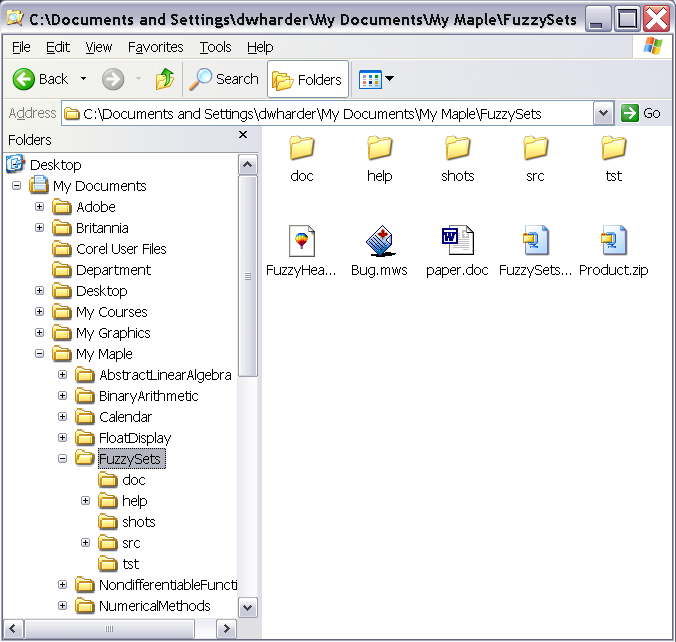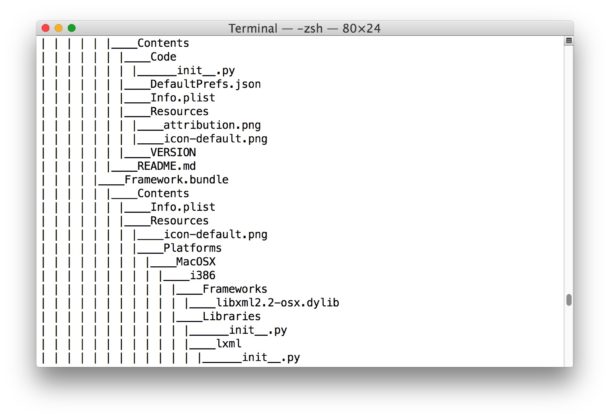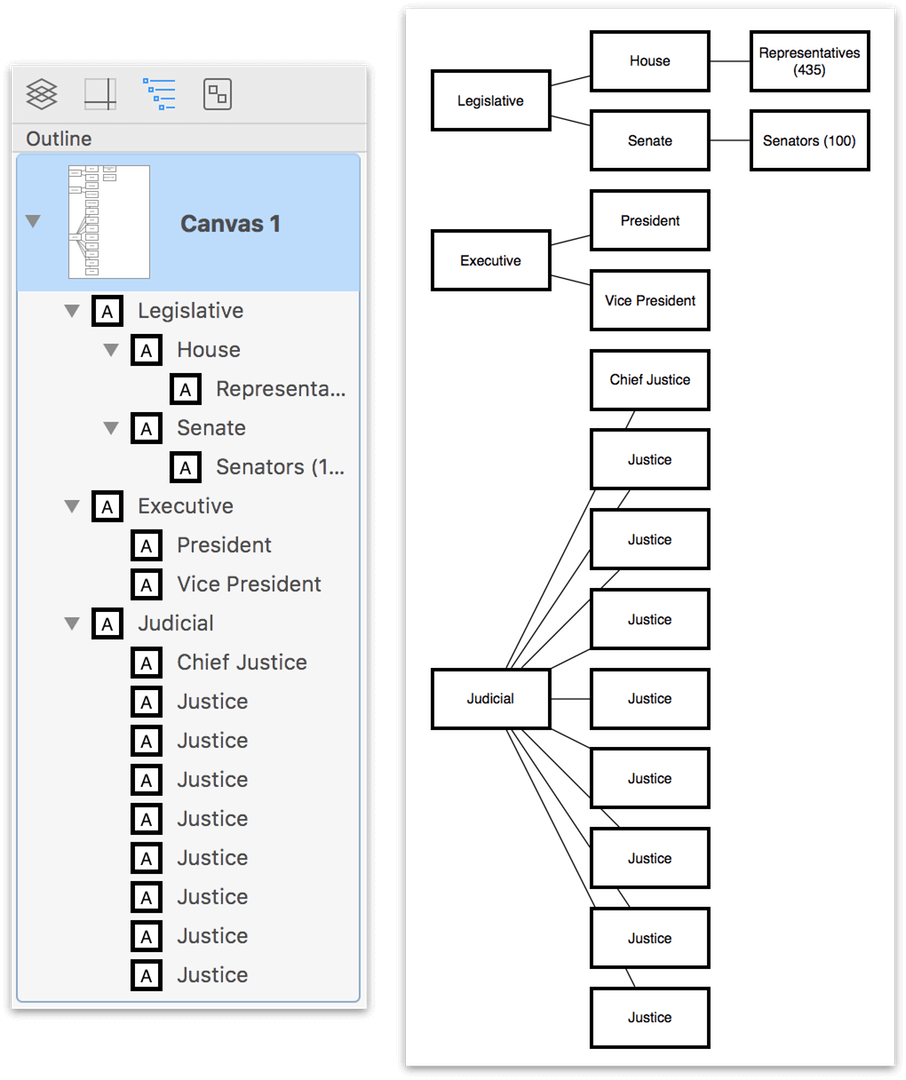The Library directories are where the system and your code store all of their related data and resources. In macOS, this directory can contain many different subdirectories, most of which are created automatically by the system. In iOS, the app installer creates only a few subdirectories in ~/Library (such as Caches and Preferences) and your app is responsible for creating all others.

Table A-1 lists some of the common subdirectories you might find in a Library directory in macOS along with the types of files that belong there. You should always use these directories for their intended purposes. For information about the directories your app should be using the most, see The Library Directory Stores App-Specific Files.

This article was written by Chiara Corsaro.Chiara Corsaro is the General Manager and Apple Certified Mac & iOS Technician for macVolks, Inc., an Apple Authorized Service Provider located in the San Francisco Bay Area. Was founded in 1990, is accredited by the Better Business Bureau (BBB) with an A+ rating, and is part of the Apple Consultants Network (ACN). Create a diagram for organizing folders using a Creately folder structure template. Create a folder for each category of document and then make subfolders for each aspect of that category. Create an ‘uncategorized' folder to place the files that don't fit into any other folder. Color-code the different folders on the diagram so it makes. Is there any script (windows, linux or webapp service) that provide formatting? There's the tree command (exists in both Windows and unix/linux) which does it rather nicely. For example, here's a small portion of the dir structure for Python-2.7.3. Sep 03, 2018 A diagram that demonstrates the structure of Mac OS X is as follows − Components of the Mac OS X Structure. Details about the different components of the Mac OS X structure as seen in the image above are as follows − Core OS. The Darwin Core is based on the BSD (Berkeley Software Distribution) version of Unix.
Each file or folder is represented by an icon with its name below or to the right of the icon. You can select the text in the file's name to change it, and you can copy, move, and delete files on your computer. Your computer comes with some folders already set up, but you can create and delete your own folders to organize your information.
Subdirectory | Directory contents |
|---|---|
| Contains all app-specific data and support files. These are the files that your app creates and manages on behalf of the user and can include files that contain user data. By convention, all of these items should be put in a subdirectory whose name matches the bundle identifier of the app. For example, if your app is named MyApp and has the bundle identifier Resources required by the app to run must be placed inside the app bundle itself. |
| Contains programs that assist users in configuration or other tasks. |
| Contains audio plug-ins, loops, and device drivers. |
| Contains app-specific autosave data. |
| Contains cached data that can be regenerated as needed. Apps should never rely on the existence of cache files. Cache files should be placed in a directory whose name matches the bundle identifier of the app. By convention, apps should store cache files in a subdirectory whose name matches the bundle identifier of the app. For example, if your app is named MyApp and has the bundle identifier |
| Contains resources for picking colors according to a certain model, such as the HLS (Hue Angle, Saturation, Lightness) picker or RGB picker. |
| Contains ColorSync profiles and scripts. |
| Contains system bundles and extensions. |
| Contains the home directories for any sandboxed apps. (Available in the user domain only.) |
| Contains plug-ins for extending system-level contextual menus. |
| Contains data files with web browser cookies. |
| Contains data used by Xcode and other developer tools. |
| Contains language dictionaries for the spell checker. |
| Contains documentation files and Apple Help packages intended for the users and administrators of the computer. (Apple Help packages are located in the |
| Contains device drivers and other kernel extensions. |
| Contains aliases to frequently accessed folders, files, or websites. (Available in the user domain only.) |
| Contains font files for both display and printing. |
| Contains frameworks and shared libraries. The |
| Sistem aplikasi e penyidikan. Contains plug-ins, libraries, and filters for web-browser content. |
| Contains keyboard definitions. |
| Specifies the agent apps to launch and run for the current user. |
| Specifies the daemons to launch and run as root on the system. |
| Contains log files for the console and specific system services. Users can also view these logs using the Console app. |
| Contains the user's mailboxes. (Available in the user domain only.) |
| Contains plug-ins for the System Preferences app. Developers should install their custom preference panes in the local domain. |
| Contains the user's preferences. You should never create files in this directory yourself. To get or set preference values, you should always use the |
| In the system and local domains, this directory contains print drivers, PPD plug-ins, and libraries needed to configure printers. In the user domain, this directory contains the user's available printer configurations. |
| Contains QuickLook plug-ins. If your app defines a QuickLook plug-in for viewing custom document types, install it in this directory (user or local domains only). |
| Contains QuickTime components and extensions. |
| Contains screen saver definitions. See Screen Saver Framework Reference for a description of the interfaces used to create screen saver plug-ins. |
| Contains scripts and scripting resources that extend the capabilities of AppleScript. |
| Contains system alert sounds. |
| (Deprecated) Contains system and third-party scripts and programs to be run at boot time. (See Daemons and Services Programming Guide for more information about starting up processes at boot time.) |
| Contains web server content. This directory contains the CGI scripts and webpages to be served. (Available in the local domain only.) |


Copyright © 2018 Apple Inc. All Rights Reserved. Terms of Use | Privacy Policy | Updated: 2018-04-09
Apple organizational structure can be described as hierarchical. Such a structure has been developed by its founder and former CEO late Steve Jobs in order to ensure focused realization of his innovative ideas and clear vision for the business. Apple organizational structure has been subjected to certain modifications since the leadership role was assumed by Tim Cook on August 2011. Specifically, Mr. Cook embraced the decentralization of decision making to a certain extent in order to encourage innovation and creativity at various levels. Nevertheless the structure remains to be largely hierarchical.
Currently, Apple organizational structure has the format illustrated in figure below:
Apple Inc. Organizational Structure
Generally, Apple corporate structure has the following characteristics:
Hierarchical organizational structure. Although Tim Cook introduced considerable changes to Apple corporate structure since assuming the top job in 2011, the structure still remains to be highly hierarchical with many layers of management. Massive size of the company that comprises 132,000 full-time equivalent employees globally necessitates the adherence to the hierarchical organisational structure.
Advantages of Apple hierarchical organizational structure include tight control possessed by senior management over all aspects of the business. Moreover, promotion opportunities motivate employees to perform well and there are clear levels of authority and responsibility. On the negative side, Apple's hierarchical organisational structure may compromise flexibly of the business to reflect changes in the global marketplace. Furthermore, in hierarchical organizations communication across different departments tends to be less effective than in flat organizations.
Product-based grouping. Product-based grouping is an important feature of Apple organizational structure. The multinational technology company divides its operations into the following product-based groups:
- This group includes App Store, ApplePay, iCloud, and Apple Music.
- iPhone
- iPad
- Other products. These include Apple TV, iWatch, headphones, cases, displays, storage devices and various other connectivity and computing products and supplies

Table A-1 lists some of the common subdirectories you might find in a Library directory in macOS along with the types of files that belong there. You should always use these directories for their intended purposes. For information about the directories your app should be using the most, see The Library Directory Stores App-Specific Files.
This article was written by Chiara Corsaro.Chiara Corsaro is the General Manager and Apple Certified Mac & iOS Technician for macVolks, Inc., an Apple Authorized Service Provider located in the San Francisco Bay Area. Was founded in 1990, is accredited by the Better Business Bureau (BBB) with an A+ rating, and is part of the Apple Consultants Network (ACN). Create a diagram for organizing folders using a Creately folder structure template. Create a folder for each category of document and then make subfolders for each aspect of that category. Create an ‘uncategorized' folder to place the files that don't fit into any other folder. Color-code the different folders on the diagram so it makes. Is there any script (windows, linux or webapp service) that provide formatting? There's the tree command (exists in both Windows and unix/linux) which does it rather nicely. For example, here's a small portion of the dir structure for Python-2.7.3. Sep 03, 2018 A diagram that demonstrates the structure of Mac OS X is as follows − Components of the Mac OS X Structure. Details about the different components of the Mac OS X structure as seen in the image above are as follows − Core OS. The Darwin Core is based on the BSD (Berkeley Software Distribution) version of Unix.
Each file or folder is represented by an icon with its name below or to the right of the icon. You can select the text in the file's name to change it, and you can copy, move, and delete files on your computer. Your computer comes with some folders already set up, but you can create and delete your own folders to organize your information.
Subdirectory | Directory contents |
|---|---|
| Contains all app-specific data and support files. These are the files that your app creates and manages on behalf of the user and can include files that contain user data. By convention, all of these items should be put in a subdirectory whose name matches the bundle identifier of the app. For example, if your app is named MyApp and has the bundle identifier Resources required by the app to run must be placed inside the app bundle itself. |
| Contains programs that assist users in configuration or other tasks. |
| Contains audio plug-ins, loops, and device drivers. |
| Contains app-specific autosave data. |
| Contains cached data that can be regenerated as needed. Apps should never rely on the existence of cache files. Cache files should be placed in a directory whose name matches the bundle identifier of the app. By convention, apps should store cache files in a subdirectory whose name matches the bundle identifier of the app. For example, if your app is named MyApp and has the bundle identifier |
| Contains resources for picking colors according to a certain model, such as the HLS (Hue Angle, Saturation, Lightness) picker or RGB picker. |
| Contains ColorSync profiles and scripts. |
| Contains system bundles and extensions. |
| Contains the home directories for any sandboxed apps. (Available in the user domain only.) |
| Contains plug-ins for extending system-level contextual menus. |
| Contains data files with web browser cookies. |
| Contains data used by Xcode and other developer tools. |
| Contains language dictionaries for the spell checker. |
| Contains documentation files and Apple Help packages intended for the users and administrators of the computer. (Apple Help packages are located in the |
| Contains device drivers and other kernel extensions. |
| Contains aliases to frequently accessed folders, files, or websites. (Available in the user domain only.) |
| Contains font files for both display and printing. |
| Contains frameworks and shared libraries. The |
| Sistem aplikasi e penyidikan. Contains plug-ins, libraries, and filters for web-browser content. |
| Contains keyboard definitions. |
| Specifies the agent apps to launch and run for the current user. |
| Specifies the daemons to launch and run as root on the system. |
| Contains log files for the console and specific system services. Users can also view these logs using the Console app. |
| Contains the user's mailboxes. (Available in the user domain only.) |
| Contains plug-ins for the System Preferences app. Developers should install their custom preference panes in the local domain. |
| Contains the user's preferences. You should never create files in this directory yourself. To get or set preference values, you should always use the |
| In the system and local domains, this directory contains print drivers, PPD plug-ins, and libraries needed to configure printers. In the user domain, this directory contains the user's available printer configurations. |
| Contains QuickLook plug-ins. If your app defines a QuickLook plug-in for viewing custom document types, install it in this directory (user or local domains only). |
| Contains QuickTime components and extensions. |
| Contains screen saver definitions. See Screen Saver Framework Reference for a description of the interfaces used to create screen saver plug-ins. |
| Contains scripts and scripting resources that extend the capabilities of AppleScript. |
| Contains system alert sounds. |
| (Deprecated) Contains system and third-party scripts and programs to be run at boot time. (See Daemons and Services Programming Guide for more information about starting up processes at boot time.) |
| Contains web server content. This directory contains the CGI scripts and webpages to be served. (Available in the local domain only.) |
Copyright © 2018 Apple Inc. All Rights Reserved. Terms of Use | Privacy Policy | Updated: 2018-04-09
Apple organizational structure can be described as hierarchical. Such a structure has been developed by its founder and former CEO late Steve Jobs in order to ensure focused realization of his innovative ideas and clear vision for the business. Apple organizational structure has been subjected to certain modifications since the leadership role was assumed by Tim Cook on August 2011. Specifically, Mr. Cook embraced the decentralization of decision making to a certain extent in order to encourage innovation and creativity at various levels. Nevertheless the structure remains to be largely hierarchical.
Currently, Apple organizational structure has the format illustrated in figure below:
Apple Inc. Organizational Structure
Generally, Apple corporate structure has the following characteristics:
Hierarchical organizational structure. Although Tim Cook introduced considerable changes to Apple corporate structure since assuming the top job in 2011, the structure still remains to be highly hierarchical with many layers of management. Massive size of the company that comprises 132,000 full-time equivalent employees globally necessitates the adherence to the hierarchical organisational structure.
Advantages of Apple hierarchical organizational structure include tight control possessed by senior management over all aspects of the business. Moreover, promotion opportunities motivate employees to perform well and there are clear levels of authority and responsibility. On the negative side, Apple's hierarchical organisational structure may compromise flexibly of the business to reflect changes in the global marketplace. Furthermore, in hierarchical organizations communication across different departments tends to be less effective than in flat organizations.
Product-based grouping. Product-based grouping is an important feature of Apple organizational structure. The multinational technology company divides its operations into the following product-based groups:
- This group includes App Store, ApplePay, iCloud, and Apple Music.
- iPhone
- iPad
- Other products. These include Apple TV, iWatch, headphones, cases, displays, storage devices and various other connectivity and computing products and supplies
Collaboration between different groups and divisions. Apple Inc. maintains an intensive and effective collaboration between various groups and divisions of the company. Each product within Apple portfolio such as iPad, iPhone, iPad, Apple TV and iWatchis a result of collaboration of product-based groups.
Data Structure Diagram
Apple Inc. Board of Directors consists of eight members with a solid leadership background in a range of industries. Three members are acting CEOs and two members are former Chairman and CEOs of global companies. Moreover, proven leaders such as former US Vice President Albert Gore Jr., former CFO and Corporate President The Boeing Company James A. Bell and co-founder and Director of BlackRock Susan Wagner also serve in Apple Board of Directors.
Taking into a number of challenges faced by the company such as rapidly decreasing life cycle of technology products and declining sales of iPhones, iPads and Mac products, [1] it can be argued that Apple organizational structure may be subjected to certain changes in the medium-term perspective. To be more specific, elements of matrix organizational structure and divisional organizational structure may be integrated into Apple Inc. organizational structure to a greater extent to increase the efficiency of new product development practices.
Mac Folder Structure Diagram Pdf
Apple Inc Report contains a full analysis of Apple organizational structure. The report illustrates the application of the major analytical strategic frameworks in business studies such as SWOT, PESTEL, Porter's Five Forces, Value Chain analysis, Ansoff Matrix and McKinsey 7S Model on Apple. Moreover, the report contains analyses of Apple leadership, business strategy and organizational culture. The report also comprises discussions of Apple marketing strategy, ecosystem and addresses issues of corporate social responsibility.
[1] Annual Report (2018) Apple Inc. Available at: https://investor.apple.com/investor-relations/sec-filings/default.aspx
